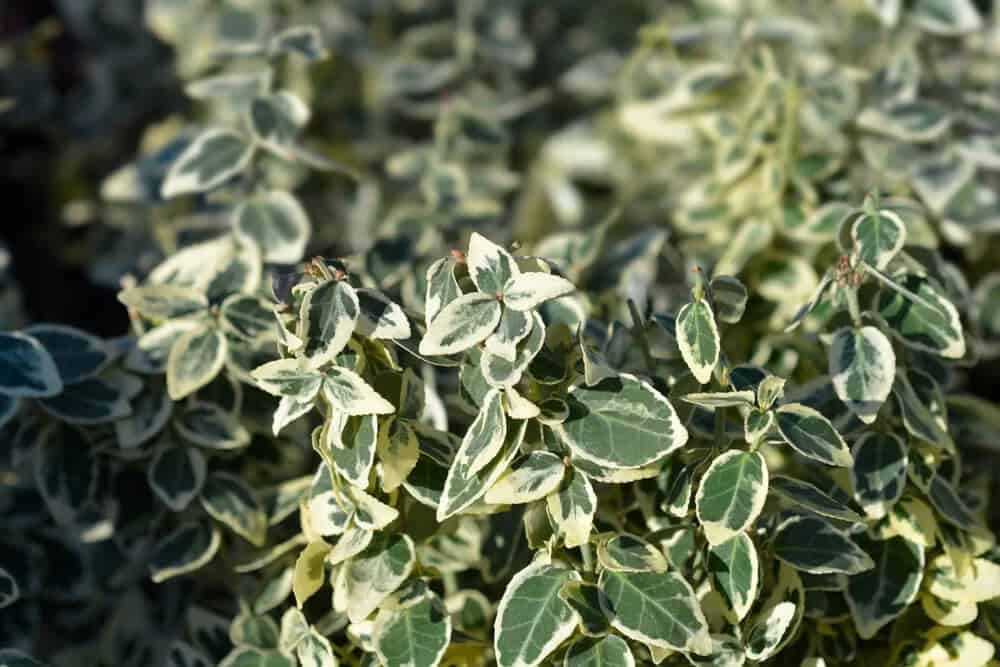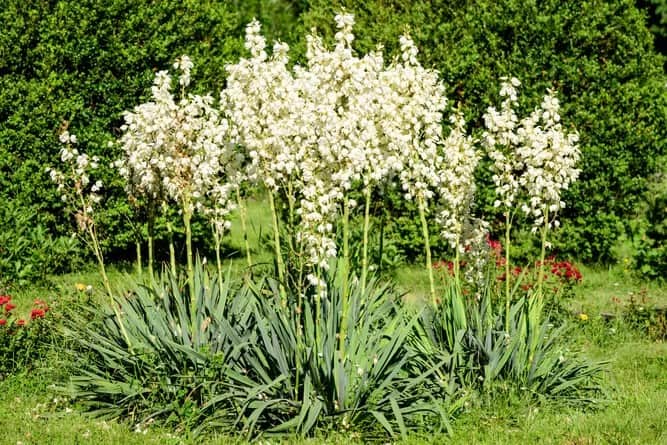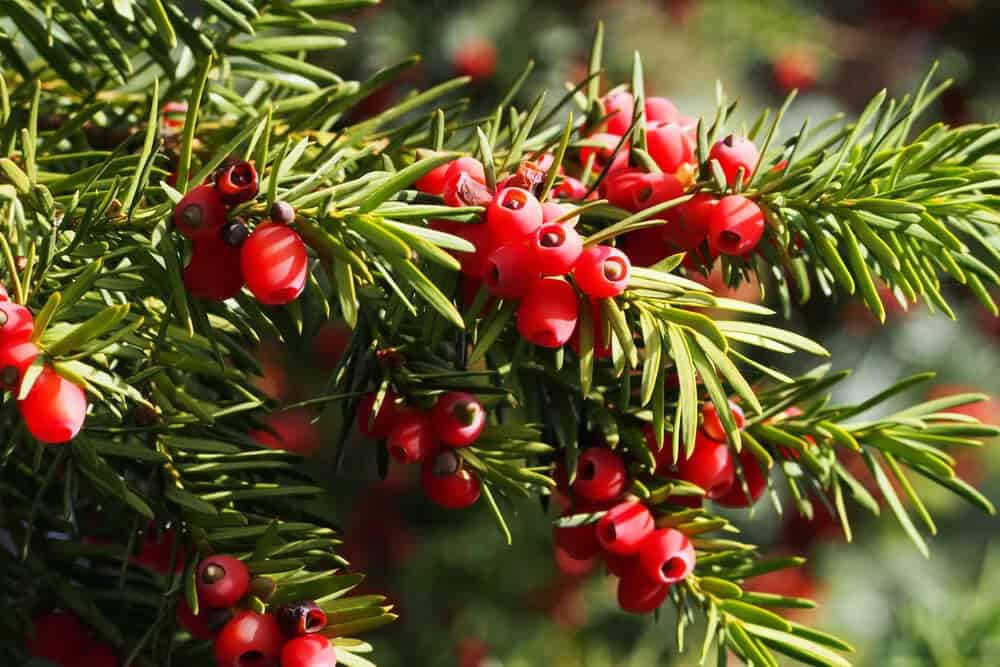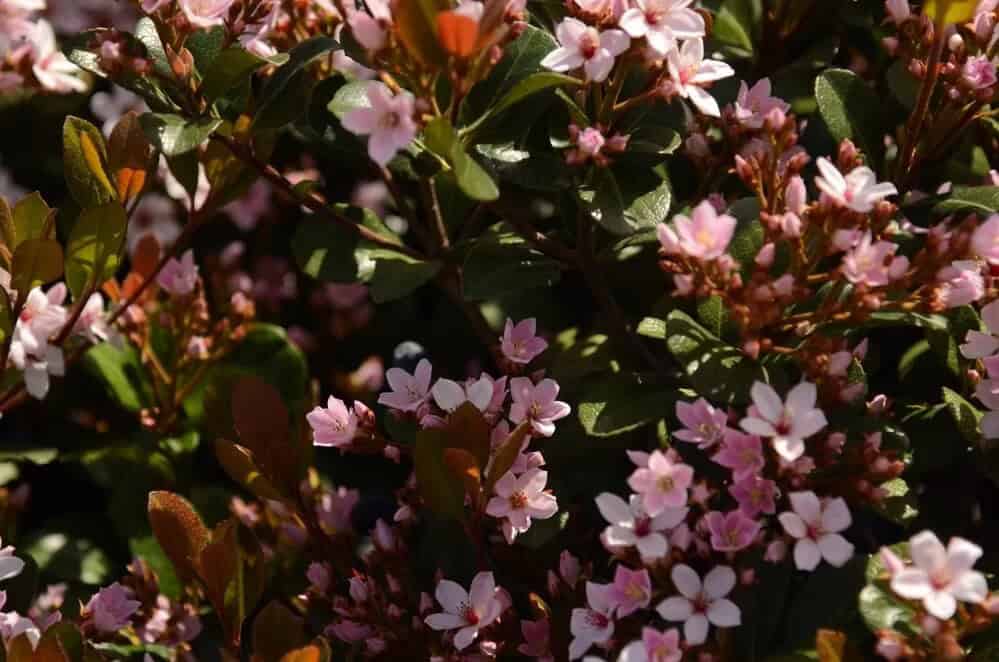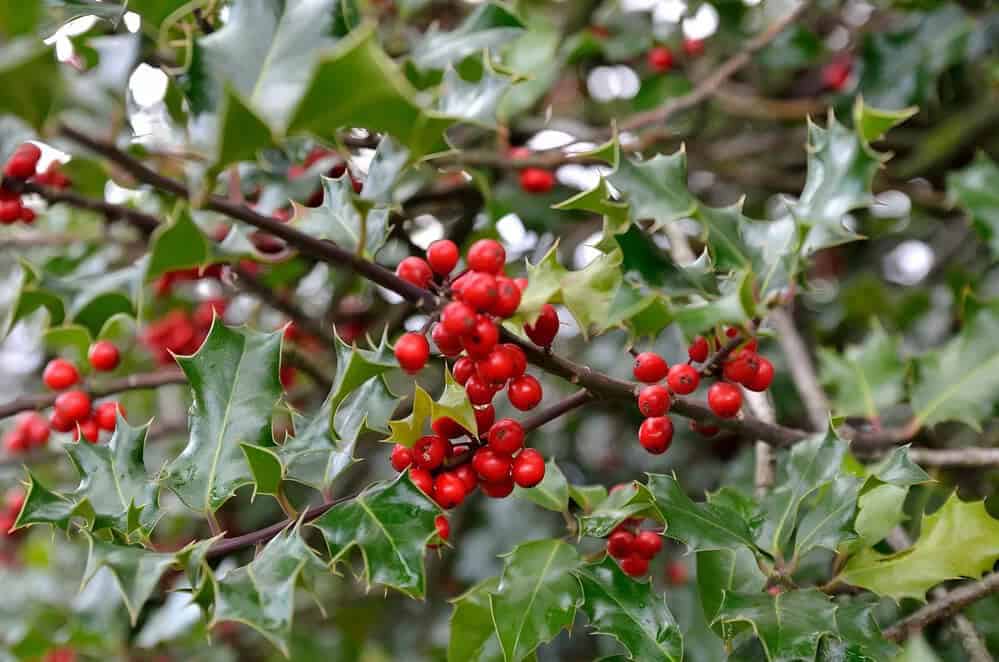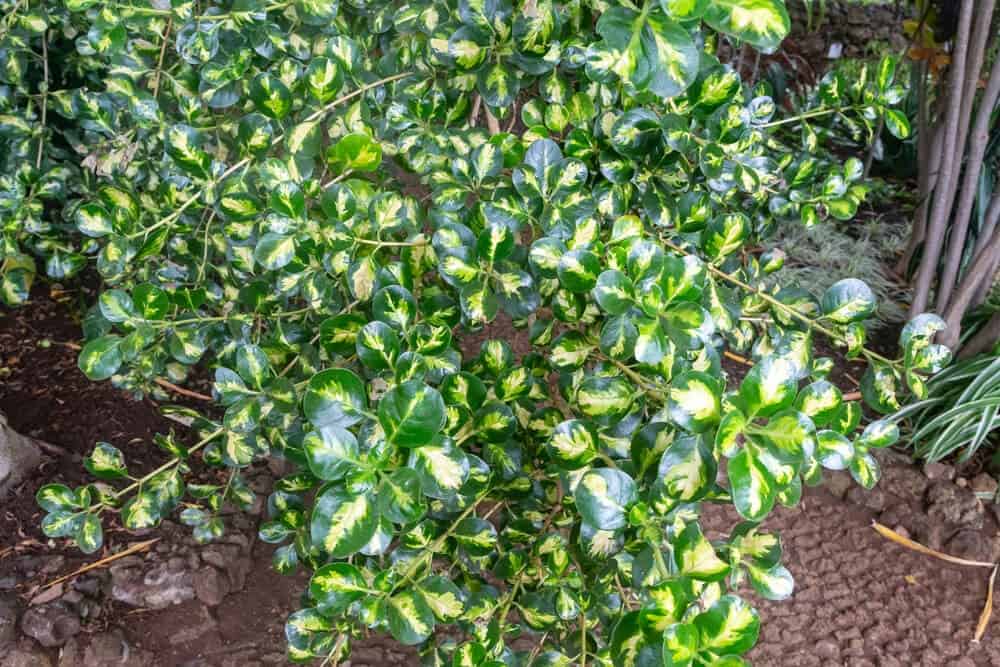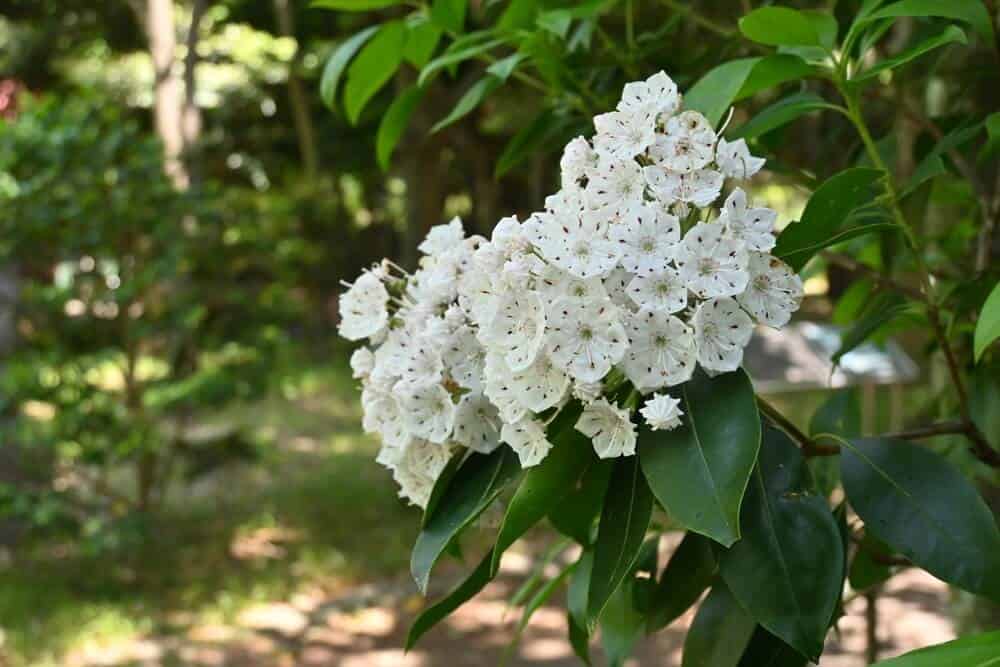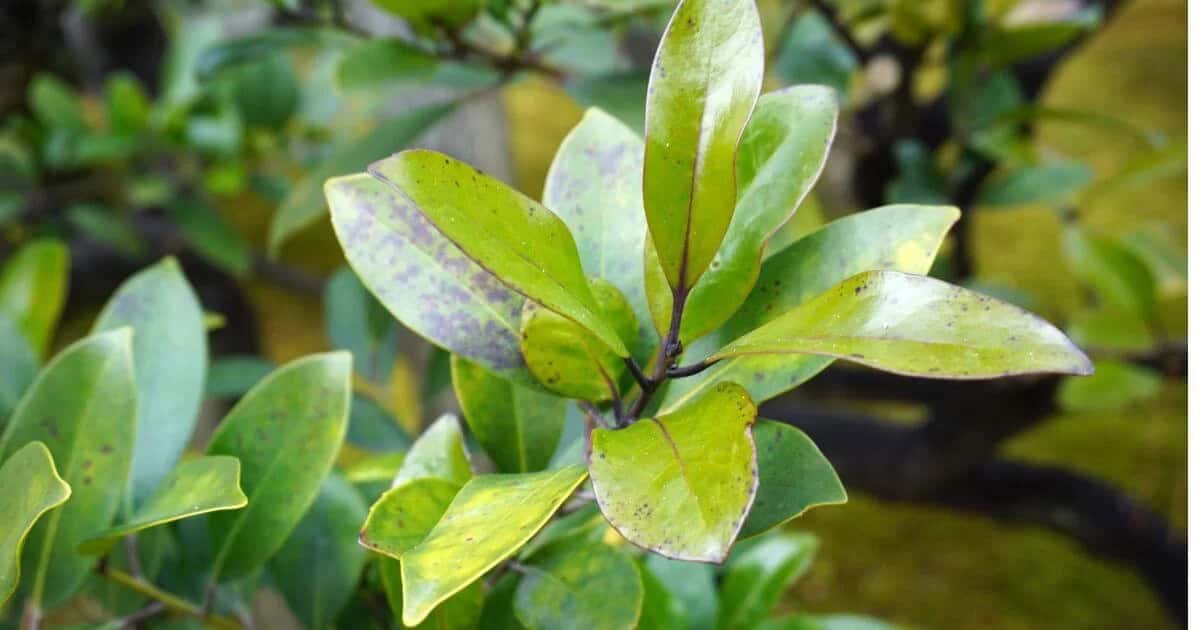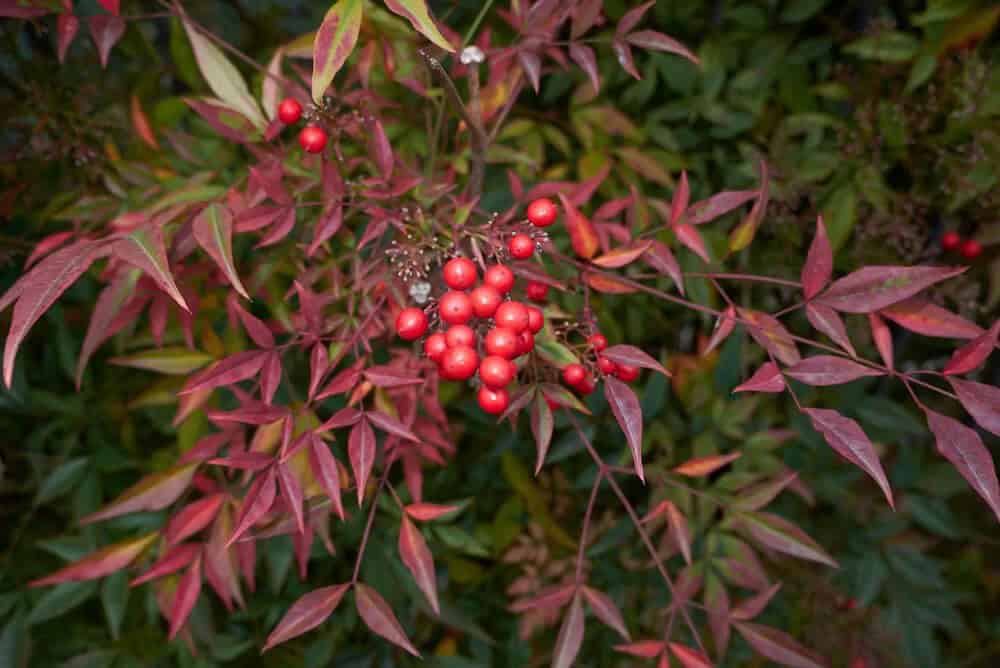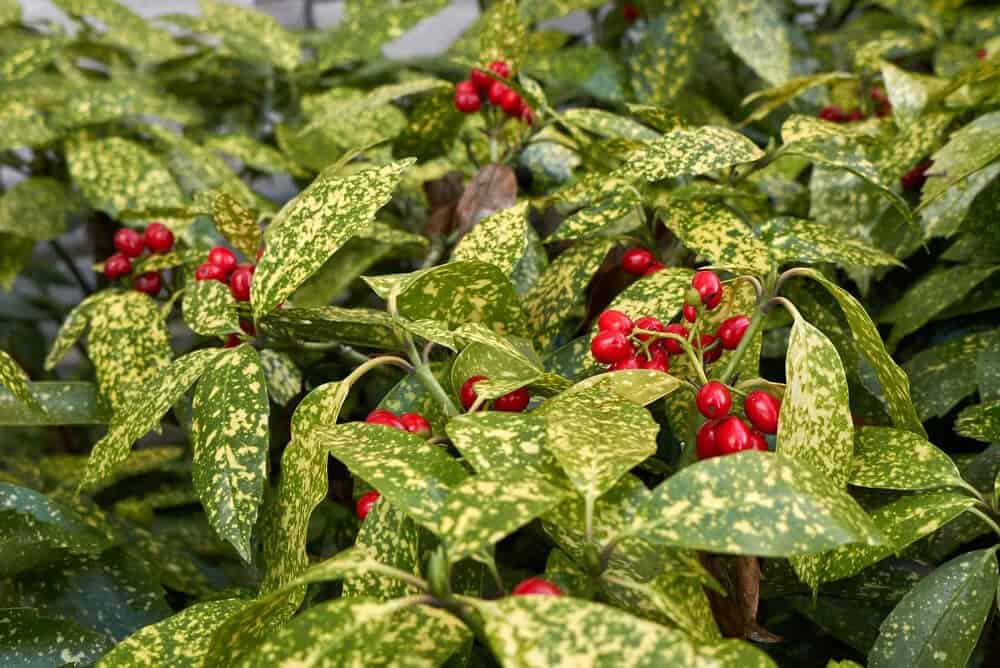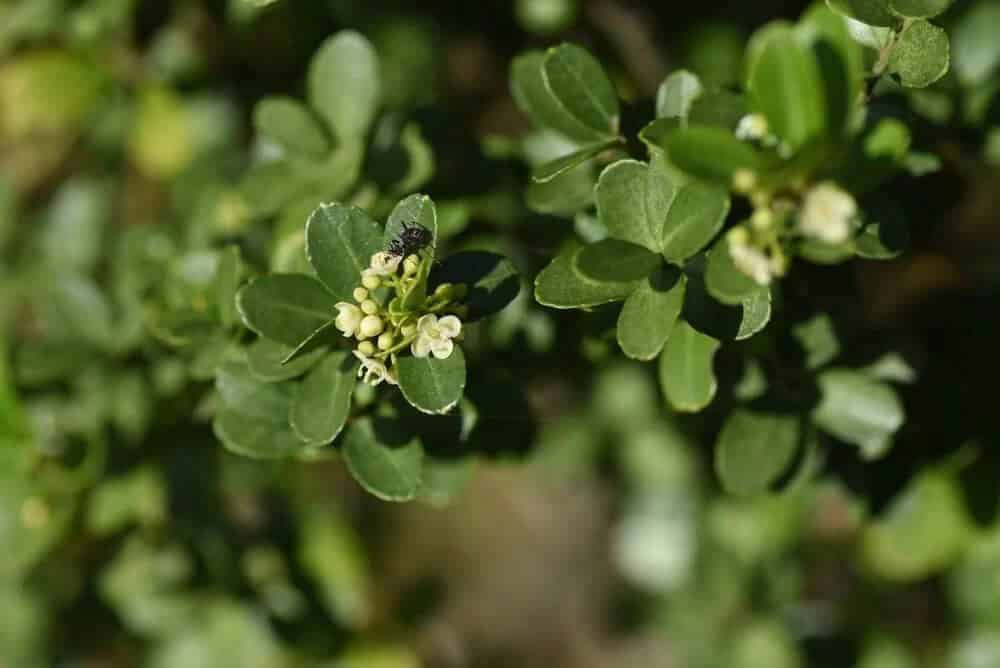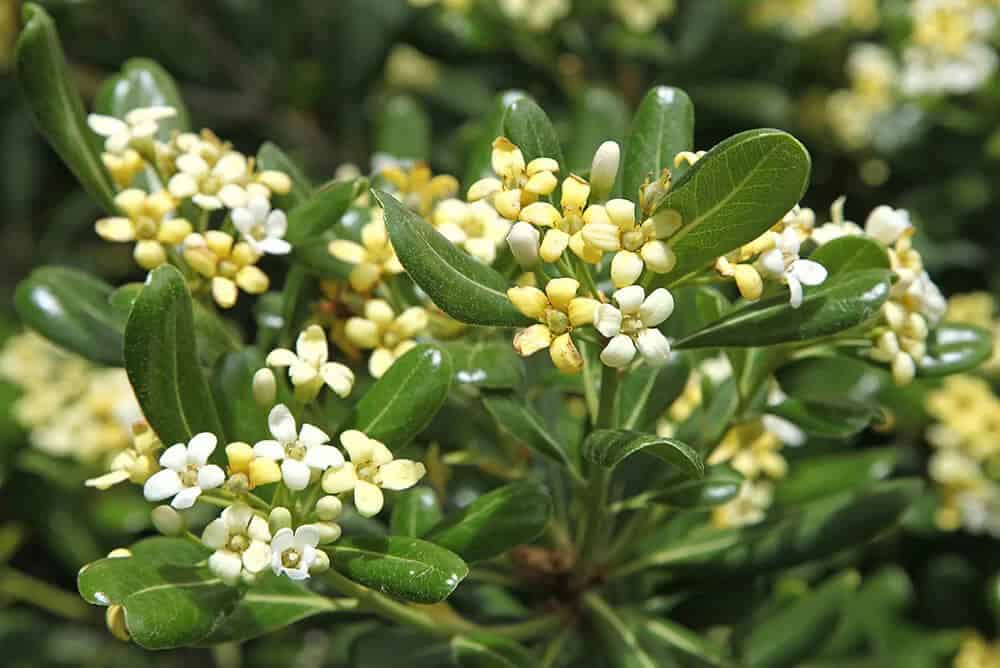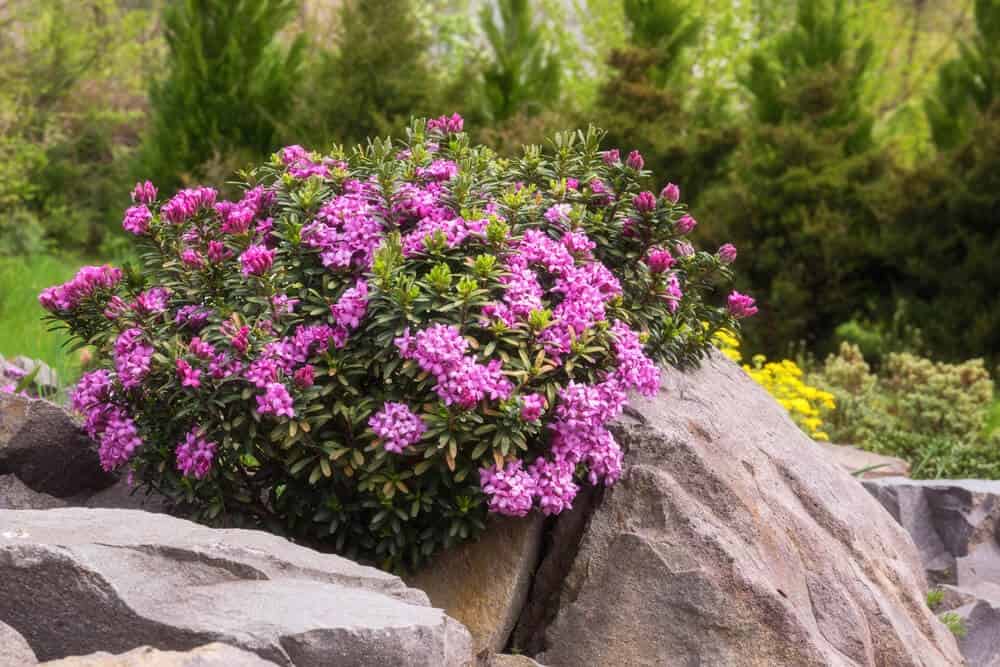While it’s easy to assume that the shade cast by trees in your garden means little to no growth, I’m here to dispel that myth. There are numerous evergreen shrubs that thrive in shaded conditions, providing a lush and vibrant appearance all year round. Not only do they fill gaps and turn heads, but they also remain stunning throughout the seasons, effectively erasing the memory of winter’s chill.
Let’s delve into both flowering and non-flowering varieties, as well as those that bring unique textures and character to your garden.
Key takeaways
As you consider planting shade-tolerant evergreen shrubs in your garden, it’s essential to keep in mind that there are numerous options available. Not only will these plants thrive in shaded areas, but they also come with a range of benefits, including the ability to add color and texture to your outdoor space. With so many varieties to choose from, it’s crucial to consider factors such as USDA zone and the level of shade present in your garden when selecting the perfect shrub for your needs.
While some may assume that these plants are exclusive to specific regions, in reality, they can be found in temperate climates around the world. On average, these evergreen shrubs tend to grow between 6-12 feet tall, making them a great option for adding height and visual interest to your garden. Additionally, many of these varieties will produce flowers, providing an extra burst of color during specific times of the year.
As with any plant, it’s essential to maintain your shade-tolerant evergreen shrubs through occasional pruning to keep their growth in check.
23 Enchanting Shade-Tolerant Evergreen Shrubs that will Make You Forget Its Winter
Wintercreeper (Euonymus fortunei)
For those who adore the beauty of variegated foliage, the Euonymus family offers a plethora of options to enhance your garden’s visual appeal. Among its 130-plus species, the Wintercreeper stands out as a fast-growing evergreen shrub that can thrive in a sprawling configuration. With its striking green leaves featuring crisp white borders, it’s no wonder this popular plant has earned widespread recognition.
The Wintercreeper typically grows between 12-24 inches tall and is adaptable to partial shade or full shade environments within USDA zones 5-8. However, before introducing this shrub into your landscape, ensure it’s not considered invasive in your region.
Mapleleaf Viburnum (Viburnum Acerifolium)
The Mapleleaf Viburnum, a stunning shrub native to eastern North America, is a must-have for those who adore autumn’s vibrant hues. Its small, maple-like leaves yield fragrant white flowers and blue-tinged berries, which in the fall, transition into a kaleidoscope of colors ranging from deep purple to creamy pink. This hardy plant thrives in partial to full shade and can tolerate drought conditions, making it suitable for most USDA zones.
Reaching up to 6 feet tall and 4 feet wide, some pruning may be necessary to maintain its desired shape. While deer tend to avoid it, the shrub attracts bird life in autumn as the fruits ripen, adding a delightful touch of wildlife watching to your garden.
Common Boxwood (Buxus Sempervirens)
The Boxwood plant boasts a rich history, with evidence of cultivation dating back to around 4000 BC. Its dense foliage is characterized by bright green, oval-shaped leaves that provide a beautiful backdrop for the small, greenish-yellow flowers it produces in the spring. While low maintenance, this versatile plant can grow quite large if not pruned regularly. Preferring partial to dappled shade, Boxwood is also deer and rabbit resistant, making it an excellent choice for gardeners.
Its hardiness extends to USDA zones 5-9, allowing it to reach impressive heights of up to 30 feet tall and 15 feet wide. As such, it’s well-suited for creating stunning hedges or shaping into intricate designs that add visual interest to your outdoor space.
Adam’s Needle (Yucca filamentosa)
For those seeking to add depth and visual interest to their garden, Adam’s Needle is an ideal choice. Its distinctive feature is its long, sharp leaves, which earn it its name. But it’s not just about the foliage – this plant truly makes a statement with its impressive flower spike, which can reach up to 15 feet in height and features delicate white bell-shaped blooms.
While the average size of Adam’s Needle is around 3 feet high and wide in USDA zones 4-10, some varieties boast variegated leaves with striking yellow stripes. This hardy, deer-resistant, and drought-tolerant plant can thrive in a range of environments, including full shade – although it may not produce flowers in these conditions. However, the unique texture and color of its leaves more than make up for this, making Adam’s Needle a compelling addition to any garden.
Rosemary (Salvia rosmarinus)
While many people are familiar with the culinary uses of Rosemary, few realize that this herb can also thrive as a stunning evergreen shrub. Its tiny, dark green leaves boast creamy white undersides, releasing a fragrant aroma that fills the air. Beyond its practical applications in the kitchen, Rosemary’s beauty is further enhanced by its production of exquisite purple, blue, or white flowers that attract bees and butterflies.
Reaching heights of up to 6 feet and widths of 4 feet, this versatile plant requires some pruning to maintain a desired size. Interestingly, it can tolerate partial shade in USDA zones 8-9, making it an excellent choice for adding unique texture to your garden, even in areas with limited sunlight.
Canada Yew (Taxus canadensis)
The Canada Yew, native to central and eastern North America, is an excellent option for gardeners who prefer plants that thrive in moist soil conditions. This low-growing, straggling conifer is perfectly adapted to grow in both partial and full shade, reaching heights of up to 6 feet and widths of 12 feet. Its flat, needle-like leaves are a deep green on top, with pale green undersides that take on a reddish hue during the winter months.
The plant produces beautiful, berry-like fruits that appear early in the fall season. With a hardiness zone of USDA 2-6, the Canada Yew can be used to stabilize soil along ponds or streams, and its slow growth rate makes it an easy-to-manage addition to any landscape.
Evergreen Azalea (Rhododendron indicum)
For a garden that’s abuzz with life, the Evergreen Azalea is an excellent choice. This flowering shrub produces a kaleidoscope of colors, making it a magnet for bees and hummingbirds. Its broad leaves are not only attractive but also provide year-round interest, as they turn a deep shade of red during winter months. With its ability to thrive in USDA zones 6-9, this shrub can be grown in partial shade and reaches approximately 4 feet tall and 4 feet wide.
For added versatility, it can be pruned after flowering if desired. Planting multiple Evergreen Azaleas together creates a stunning display that’s sure to attract attention.
Indian Hawthorn (Rhaphiolepis indica)
The Indian Hawthorn may have a name that suggests its origins are Indian, but it’s actually a shrub native to southern China. Its unique feature is the subtle bronze tint on its leaves, which deepen to a rich green as they mature. This compact plant can grow up to 4 feet tall and wide, producing clusters of fragrant pink or white flowers. Once the blooms have faded, the Indian Hawthorn’s natural pruning cycle begins, allowing you to shape it as needed.
As winter approaches, small blue-tinged berries will emerge, attracting local wildlife to your garden. This adaptable shrub thrives in partial or dappled shade and is suitable for USDA zones 8-11. When planted en masse, the Indian Hawthorn forms stunning, miniature hedges that add charm to any outdoor space.
Wintergreen Barberry (Berberis julianae)
When searching for a plant that’s virtually impervious to environmental challenges, the Wintergreen Barberry is an excellent choice. This adaptable perennial boasts impressive resistance to drought, shade, deer, and cold temperatures, making it suitable for a wide range of soil types. Its thorny stems grow together as they mature, allowing it to be effectively utilized as a natural wind barrier.
The plant’s leathery green foliage transforms into vibrant red hues during autumn, adding a pop of color to your garden. In the spring, bright yellow flowers emerge and eventually turn into blue-ish berries that attract birds and bees. Wintergreen Barberry thrives in USDA zones 6-9 and can reach impressive heights of up to 10 feet tall and 8 feet wide.
European Holly (Ilex aquifolium)
The European Holly is a Christmas icon with more to offer than just its symbolic significance. It’s also an evergreen shrub that thrives in partial or dappled shade, growing up to 60 feet tall before requiring pruning to maintain its compact shape. When pruned to size, it can be used as a hedge for added privacy. The plant’s glossy leaves feature spiny teeth, while the fragrant white flowers are pollinated by bees, ultimately giving rise to the distinctive red holly berries.
With a USDA hardiness zone range of 6-8, this versatile shrub is suitable for many climates. However, it’s worth noting that European Holly can become invasive in certain regions, including California, Alaska, and Oregon.
Cape Jasmin (Gardenia jasminoides)
The Cape Jasmine, a flowering shrub often featured in wedding bouquets and arrangements, has a surprising attribute – it’s an evergreen that thrives in partial shade. What sets it apart is its prolonged blooming period, filling the air with a sweet fragrance. Characterized by dark green leaves with a glossy finish, this plant excels when grown in pots or directly in the soil.
Typically reaching 2 feet in height and spreading 3 feet wide, Cape Jasmine can be pruned in spring to maintain its desired shape. With a hardiness range of USDA zone 8-11, it’s an attractive addition to many gardens.
Mirror Bush (Coprosma repens)
The Mirror Bush earns its name from the glossy, leathery texture of its rounded leaves, which provide a striking visual appeal. As a dense, compact, and fast-growing shrub, it excels as a screening option. Its impressive resilience is also showcased by its ability to thrive in drought-prone conditions, resist pests and diseases, and flourish in coastal environments. For added flair, the variegated varieties offer a pop of color, with hues ranging from vibrant yellow and orange to bold red.
This adaptable shrub can thrive in partial to full shade, reaching heights of up to 6 feet tall and wide in USDA zones 9-11.
Mountain Laurel (Kalmia latifolia)
Mountain laurel is an excellent choice for gardens, offering adaptability to varying light conditions and even excelling in full shade. Its origins lie in North America, where it’s renowned for its vibrant clusters of pink, purple, or white blooms. This slow-growing shrub can reach heights of up to 15 feet and serve as a natural hedge, providing privacy. As part of the blueberry family, mountain laurel thrives in USDA zones 4-9.
However, gardeners with pets should exercise caution when planting this shrub, as it is toxic to cats and dogs.
Japanese Camellia (Camellia japonica)
Japanese Camellia is a popular choice for winter gardens due to its vibrant, rose-like flowers that bloom from October to March. These striking blooms come in shades of pink and red, adding a burst of color to the typically muted winter landscape. As a shade-loving shrub, it attracts bees and birds to your garden, making it an excellent addition for those looking to support local wildlife.
While it’s a slow-growing plant that can reach up to 15 feet tall and wide, its deep green, glossy leaves provide year-round interest when the flowers are not in bloom. Japanese Camellia thrives in USDA zones 7-9, but be sure to keep an eye out for pests that may affect its growth.
Isu Tree (Distylium racemosum)
The Isu Tree, a member of the witch hazel family, boasts an understated elegance. Indigenous to Japan, this shrub was historically cultivated for its dense, dark wood, but it also thrives as a partial shade-loving border plant. A highlight of early spring is the emergence of small clusters of vibrant red flowers, which provide a striking contrast to the plant’s lustrous, bright green foliage.
One of this tree’s notable advantages is its natural resistance to disease and pests, coupled with tolerance for drought and slow growth rate, making maintenance a breeze. Reaching heights of up to 10 feet and spanning widths of around 8 feet in USDA zones 7-9, the Isu Tree offers a versatile and low-maintenance addition to any garden.
Heavenly Bamboo (Nadina domestica)
Heavenly Bamboo’s vibrant foliage is a true showstopper, transforming from deep green to sunny yellow and finally fiery red as the seasons progress. But it’s not just its leafy display that makes this plant stand out – its unique cane-like growth habit and clusters of white flowers that ripen into juicy red berries are equally impressive.
Just be aware that this plant has a darker side: its tendency to self-seed and produce multiple suckers can lead to invasiveness in certain regions, and it’s also toxic to pets and small children. Despite these drawbacks, Heavenly Bamboo is relatively low-maintenance, thriving in full shade and tolerating drought conditions. It can grow quite tall – up to 8 feet high and 4 feet wide – in USDA zones 6-10.
Spotted Laurel (Aucuba japonica)
For gardeners seeking to add an unusual touch to their shaded areas, Spotted Laurel is an excellent choice. Its deeply green leaves feature striking yellow spots, while vibrant red fruit appears during winter months. This adaptable plant thrives in containers or directly planted in partial-to-full shade and can tolerate subpar air and soil conditions.
Native to Japan, Spotted Laurel has successfully adapted to the North Carolina environment and can reach impressive heights of up to 10 feet, spreading outwards to approximately 6 feet wide. With a hardiness zone range of USDA 7-9, this versatile plant is an attractive option for gardeners in these regions.
Japanese Holly (Ilex crenata)
Japanese Holly brings a unique charm to any garden with its delicate leaves and clusters of white flowers, which can add an intriguing textural dimension. This versatile plant thrives in partial to dappled shade, making it an ideal choice for topiaries, where it can be pruned and shaped to create stunning forms. Its compact nature makes it well-suited for small spaces, or it can be planted together to form a charming hedge.
While Japanese Holly can grow up to 10 feet tall in optimal conditions, a compact variety is also available, reaching just 3 feet in height. This hardy plant is tolerant of drought and suitable for USDA zones 5-8.
Mock orange (Pittosporum tobira)
The Mock Orange’s whimsical charm originates from its delicate white flowers that bloom abundantly in spring, emitting a sweet fragrance reminiscent of orange blossoms. Its foliage offers an added layer of visual appeal, with variegated leaves introducing splashes of color to your outdoor space or a uniform green hue. This adaptable plant thrives in partial shade and can rapidly grow up to 4 feet tall and wide, making it an ideal candidate for creating screens or hedges.
To maintain its desired size, regular pruning may be necessary. The Mock Orange is hardy in USDA zones 8-11 and exhibits impressive drought tolerance; however, its popularity among deer means that this plant may require special care to protect it from these enthusiastic grazers.
Yellow Anise (Illicium parviflorum)
Yellow Anise is another plant that flourishes in full shade, despite its resemblance to a common spice found in kitchens worldwide. While the seeds of this plant are not meant for human consumption, the new leaves that emerge are a vibrant yellowish green, gradually maturing into a more olive green hue as they mature. This subtle yet striking coloration adds a pop of brightness to any garden where it’s cultivated.
Native to the southeastern regions of the United States, Yellow Anise is well-suited for USDA zones 6-10 and can reach impressive heights exceeding 20 feet tall, necessitating regular pruning to maintain a manageable size. As an added bonus, this plant is naturally deer-resistant and releases a distinctive licorice scent when its leaves are crushed.
Arborvitae (Thuja)
The Arborvitae, a versatile shrub or tree native to North America, is often found in landscapes due to its ability to thrive in various environments. This conical-shaped plant boasts scale-like leaves that provide a unique textural element when incorporated into your garden design. Its blue-tinged fruits are an added attraction, and the pungent aroma released when leaves are bruised only adds to its allure.
With its tolerance for partial shade and ability to withstand drought conditions, the Arborvitae is an attractive option for gardeners seeking low-maintenance foliage. Its deer-resistant nature and potential height of up to 15 feet also make it a popular choice. This hardy plant flourishes in USDA zones 2-8, making it suitable for a wide range of climates.
Winter Daphne (Daphne odora)
Attracting beneficial pollinators like bees, butterflies, and moths to your garden is a wonderful goal, and one way to achieve it is by planting Winter Daphne. This attractive shrub thrives in partial shade and produces an array of sweetly scented flowers in shades of pink, purple, and white. Beyond its flowering period, the plant boasts striking, glossy deep green leaves that can be admired year-round. Reaching approximately 6 feet tall, Winter Daphne is well-suited to USDA zones 7-9.
However, it’s essential to exercise caution when handling this plant: its sap can cause skin irritation and the entire plant is toxic if ingested. When pruning or interacting with your Winter Daphne, be sure to don protective gloves to ensure a safe and enjoyable gardening experience.
Japanese Pieris (Pieris japonica)
This stunning shrub steals the show with its robust, rounded foliage. As the seasons change, the deep bronze or purple leaves provide vibrant hues that will captivate your senses. In spring, an abundance of white blooms resembling Lily of the Valley flowers burst forth, filling the air with a sweet fragrance that can drift into your home. Characterized by slow growth, this shrub can reach impressive heights of 15 feet and widths of 8 feet.
Notably adaptable, it thrives in partial to full shade and is suitable for USDA zones 5-8. A bonus feature includes deer resistance, making it a great choice for gardens with wildlife. Additionally, its compact nature allows it to be used as a hedge when planted closely together, while its preference for moist soil ensures optimal growth.
23 Fantastic Shade-Tolerant Evergreen Shrubs For Where The Sun Doesn’t Shine
While it may be necessary to bid farewell to sun-loving plants like tropicals, roses, or others, there are still many stunning evergreen options perfect for shaded areas in your garden. One of our favorites is Rhododendron, which boasts a range of colors and can add a pop of color to your landscape. Another unique option is Mountain Laurel, which can be used to create beautiful hedges providing extra privacy.
Keep in mind that shade is often unpredictable and light conditions can vary significantly throughout your garden. As such, it’s crucial to monitor the changing light patterns before selecting the ideal plants for each area.
Frequently Asked Questions About Shade-Tolerant Evergreen Shrubs
Which are the best shade-tolerant evergreen shrubs for privacy?
If you’re looking to create a sense of privacy in your yard without sacrificing the beauty of your outdoor space, shade-tolerant evergreen shrubs are an excellent choice. But, you may be wondering if there’s anything that can thrive in these conditions. The good news is that there are several plants that not only tolerate shade but also require it to grow well. Among them are Mountain Laurel (Kalmia latifolia), European Holly (Ilex aquifolium), and Common Boxwood (Buxus Sempervirens).
These versatile shrubs can provide a stunning display of year-round interest, while also serving as an effective screen or hedge.
What shrubs like full shade?
While it’s common to think that plants require abundant sunlight to flourish, the truth is that many shrubs are perfectly happy in full shade. In fact, some of these shade-loving species will even produce vibrant flowers! Examples of these adaptable plants include Wintercreeper (Euonymus fortunei), Mountain Laurel (Kalmia latifolia), Japanese Camellia (Camellia japonica), Spotted Laurel (Aucuba japonica), and Yellow Anise (Illicium parviflorum).
What evergreen plants grow well in the shade?
Among the many evergreen plants that thrive in shade, our list features a variety of shrubs. But we’re not stopping there – other notable mentions include trees like the Strawberry Tree (Arbutus unedo), which produces edible fruit and has attractive bark. For a more low-maintenance option, consider carpeting plants such as Japanese Spurge (Pachysandra terminalis) that spread quickly to create lush, verdant groundcover.
And for some added beauty, flowers like Lily of the Valley (Convallaria majalis) add delicate charm to any shaded area.
Does a shade-tolerant deer-resistant evergreen shrub exist?
Among the many shade-tolerant and deer-resistant shrubs available are some excellent options. Rosemary (Salvia rosmarinus) and Adam’s Needle (Yucca filamentosa) are two such examples, as is Yellow Anise (Illicium parviflorum). Yet, for those looking for an evergreen solution that can withstand even the most persistent deer, the Common Boxwood (Buxus Sempervirens) stands out.
Its ability to thrive in shade and resist the grazing habits of deer make it a popular choice for hedges and other landscaping applications.
